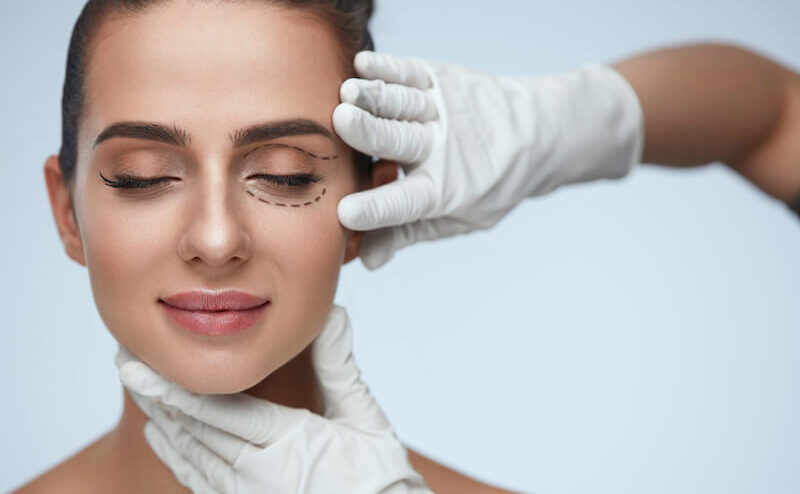
- Problems
- Treatments
Stem Cell Mesotherapy for Face and Hair
Nowa Estetyka Medical Center
A breakthrough in skin revitalization – rejuvenation treatments using stem cells are completely safe, based on the cooperation of your own body’s cells and structural S-PRF fibrin. This is one of the most valued methods of natural skin regeneration with stem cells and reversing aging processes. Stem cells themselves are also used in modern medicine to treat many blood disorders and cancers.
How Does Stem Cell Mesotherapy Work?
Scalp mesotherapy with stem cells is an autologous treatment from the patient’s own blood, utilizing the synergy between the patient’s own cells and structural fibrin. It effectively activates “dormant” stem cells, which have the ability to multiply in various ways. Stimulated stem cells go through a division phase and replace old and damaged skin cells. Their intelligent function allows them to receive signals from the surrounding area and recognize the unique needs of the skin at the application site.
| Duration of the procedure | several minutes |
| Safety | high |
| Suitable for pregnant patients | yes |
| Results | visible immediately |
| Treatment plan | at least 2 sessions spaced 4-6 weeks apart |
| Preparation for the procedure | good hydration, avoid aspirin, ibuprofen, and heparin-based medications |
PRF and S-PRF Fibrin
Fibrin is a three-dimensional structure that contains highly concentrated platelets, growth factors, white blood cells (leukocytes), and stem cells. Structural S-PRF fibrin (scaffold-like) serves as a temporary scaffold for new skin tissue cells due to its ability to create fibrin in the clotting process. On the fibrin strands of S-PRF, dormant stem cells, growth factors, cytokines, and leukocytes in platelet-rich fibrin are activated.
Platelet-Rich Fibrin (PRF) is a concentrate of stem cells and growth factors. While platelet-rich plasma releases growth factors immediately after application, autologous fibrin releases six growth factors up to 28 days post-application, meaning it works for a much longer period. The purpose of platelet-rich fibrin is to stimulate the natural biological renewal mechanisms of cells and aid in healing.
Stem cells differ from other cells in the body due to their ability to divide indefinitely, repopulate throughout a person’s life, and transform into other tissues with specialized roles in the body. The procedure uses two types of stem cells: hematopoietic stem cells (HSCs) from peripheral blood and mesenchymal stem cells (MSCs), which are mainly found in muscle and skin tissue, capillaries, and hair follicles. Activated mesenchymal cells possess anti-aging properties and play a role in dividing and transforming into new cell lines needed by tissues in complex regeneration processes.
Hematopoietic stem cells are contained in the platelet-rich fibrin solution obtained by centrifuging a sample of the patient’s venous blood. Activated HSCs differentiate into the missing lines of other tissue cells.
How Does Stem Cell Mesotherapy Work?
For S-PRF, the volume of material obtained in a single session is 4ml, and for I-PRF, it’s 1ml. The duration of the procedure is 10 minutes for both. The preparation is applied subcutaneously using mesotherapy techniques.
Mild swelling may occur for several hours after the procedure, along with slight bruising at injection sites. The effects of stem cell lifting are visible immediately, and the skin’s regeneration processes continue for weeks after the procedure. A minimum of two treatments spaced 4-6 weeks apart is recommended. More treatments or sets of preparations during a single session are also possible.
Preparation for the Procedure
Three days before the procedure, drink at least 2.5 liters of fluids per day – good hydration increases the volume of peripheral blood, fibrin, and thus the effectiveness of the treatment. For five days before the procedure, avoid medications that affect blood clotting (e.g., aspirin – acetylsalicylic acid, Gingko biloba supplements, heparin-based medications, ibuprofen).
On the day of the procedure, avoid situations that could lead to infection: swimming pools, tanning beds, saunas, gyms, and heavy physical exertion.
Is the Stem Cell Procedure Safe?
Stem cell treatments are completely safe – sterile glass syringes with medical IIB certification, free of chemicals and dead bacteria, are used. This ensures that only the essence of components from your own body returns to it. Your own cells are hypoallergenic and adapt well at the application site; there is no risk of complications.
Indications
- broad-spectrum stem cell rejuvenation
- forehead wrinkles, eye area, crow’s feet
- cheekbone-temple area
- drooping upper eyelids
- marionette lines, smoker’s wrinkles, corners of the mouth, jawline
- nasolabial folds
- rejuvenation of neck, décolleté, or hand skin
- pigmentation reduction
- skin laxity on arms, breasts, thighs, abdomen
- postoperative, trauma, or acne scars
- treatment of tissue loss – subcutaneous fat loss
- hair growth
- firming and rejuvenation of lips
What Are the Effects of Stem Cells?
Stem cells not only stimulate the skin to repair but also enable the gradual production of new cells at the application site – due to the prolonged release of growth factors, they have more potential than other platelet-rich plasma treatments. The result is comprehensive skin rejuvenation, with the skin becoming radiant and tighter – helping you look younger!
- smoothing of wrinkles
- better skin tension and elasticity – sagging cheeks or eyelids are lifted
- reduction of stretch marks and cellulite
- reduction of scars and furrows
- even skin tone, reduction of pigmentation
- the complexion gains radiance
- restoration of lip color in lip procedures
Contraindications
- Infections and skin inflammations, including herpes and acne, systemic infections
- Immune system disorders (post-transplant patients)
- Autoimmune diseases: RA, psoriasis, rosacea, lupus, Hashimoto’s disease, autoimmune vasculitis
- Blood disorders, liver conditions: hepatitis or liver cirrhosis
- Anticoagulant and NSAID treatment
- Cancer – a patient can qualify for the procedure if five years have passed since treatment.
- basal cell carcinoma – if three years have passed
- breast cancer – if seven years have passed
- Pregnancy and breastfeeding